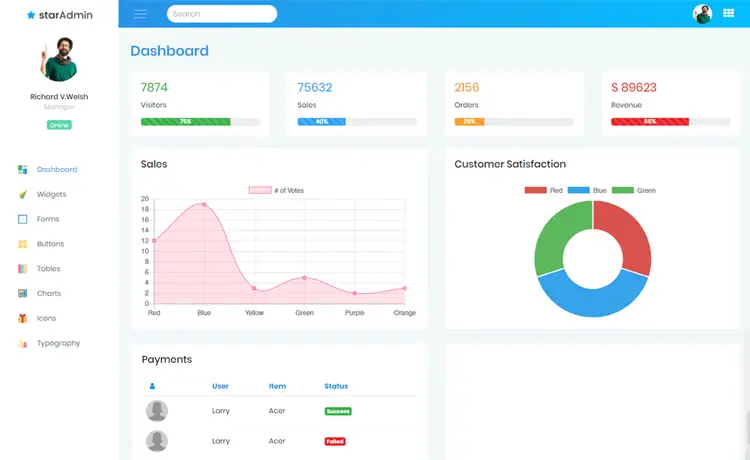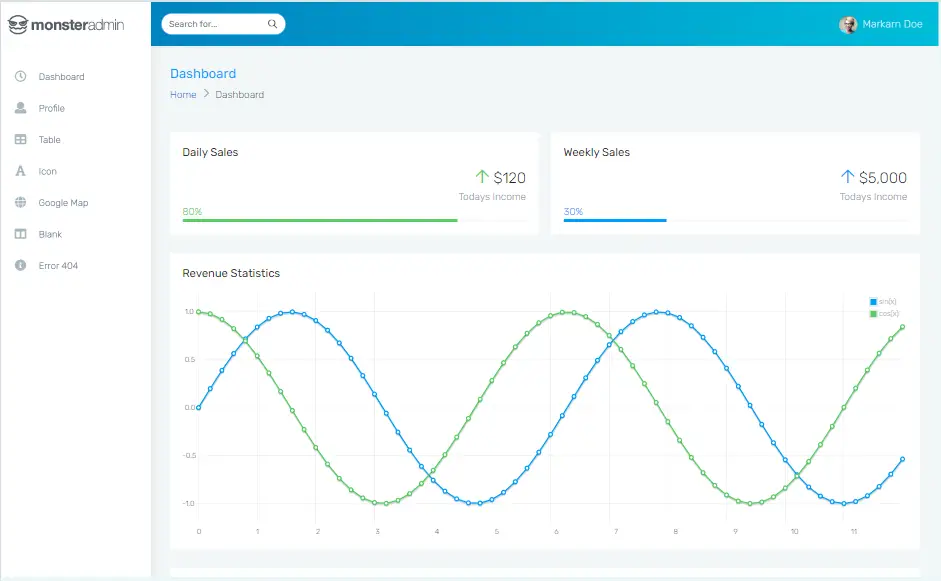Implementing Authorization in .NET Core APIs
By Tan Lee Published on Jan 10, 2025 363
To enforce this, you can apply a custom attribute to your API methods, ensuring that only requests with a valid authorization token can access them.
First, you need to create a custom attribute, AuthTokenRequired, that can be applied to the endpoints in your controller. This attribute will ensure that the endpoint is protected by token-based authentication.
Creating the Custom Authorization Attribute
We start by defining the custom AuthTokenRequiredAttribute. This will utilize TypeFilterAttribute to link to an authorization filter class (TokenAuthorizationFilter).
using Microsoft.AspNetCore.Mvc.Filters;
using Microsoft.AspNetCore.Mvc;
using System.Security.Authentication;
namespace MyApp
{
// Custom authorization filter that validates the token
[AttributeUsage(AttributeTargets.Method, Inherited = false, AllowMultiple = true)]
public class TokenAuthorizationFilter : Attribute, IAuthorizationFilter
{
private readonly IRepository _repository;
private readonly IWebHostEnvironment _environment;
public TokenAuthorizationFilter(IRepository repository, IWebHostEnvironment environment)
{
_repository = repository;
_environment = environment;
}
public void OnAuthorization(AuthorizationFilterContext context)
{
// Skip token validation in the development environment
if (_environment.IsDevelopment())
return;
// Retrieve the token from the request header
var token = context.HttpContext.Request.Headers["AuthorizationToken"];
if (string.IsNullOrEmpty(token))
throw new AuthenticationException("Unauthorized");
// Validate the token (this is just an example check)
if (token != "valid-token")
throw new AuthenticationException("Unauthorized");
}
}
}In this example:
AuthTokenRequiredAttribute: This attribute is applied to controller methods and specifies that the method requires a valid token for access. It triggers theTokenAuthorizationFilter.TokenAuthorizationFilter: This is the actual logic that runs when the attribute is used. It checks the request headers for a valid authorization token and throws anAuthenticationExceptionif the token is missing or invalid.
Applying the Attribute to Controller Actions
Once the custom attribute is in place, you can now decorate your API actions with it. In this case, the GetProfile method requires a valid authorization token before it can be executed.
using Microsoft.AspNetCore.Mvc;
namespace MyApp.Controllers
{
[ApiController]
[Route("api/[controller]")]
public class ProfileController : Controller
{
[HttpGet()]
[AuthTokenRequired] // This endpoint requires a valid authorization token
public async Task<IActionResult> GetProfile()
{
try
{
// If the token is invalid, an exception will be thrown before this code is reached.
var profile = await _repository.GetProfileAsync();
return Ok(profile);
}
catch (Exception ex)
{
return Unauthorized(new { message = ex.Message });
}
}
}
}In this example:
Applying the Attribute: The
[AuthTokenRequired]attribute is placed above theGetProfileaction in the controller. This indicates that this endpoint requires an authorization token in the request header.Authorization Flow: When a request hits this endpoint, the
TokenAuthorizationFilterchecks the request header for the token. If the token is missing or invalid, the request is denied by throwing anAuthenticationException.Handling Unauthorized Requests: If the authorization fails, the action method is never reached.
- Implement security headers for an ASP.NET Core
- How to add security headers to an ASP.NET Core Application
- How to Initialize TagHelpers in ASP.NET Core with Shared Data
- Boost Your ASP.NET Core Website Performance with .NET Profiler
- The name 'Session' does not exist in the current context
- Implementing Two-Factor Authentication with Google Authenticator in ASP.NET Core
- How to securely reverse-proxy ASP.NET Core
- How to Retrieve Client IP in ASP.NET Core Behind a Reverse Proxy





